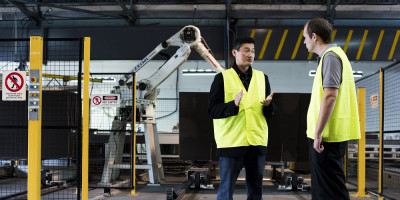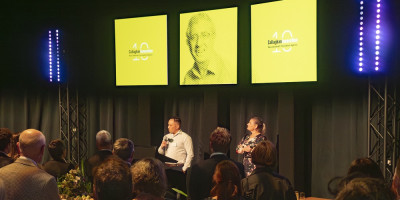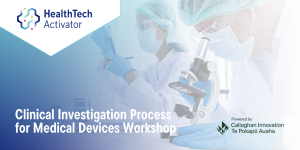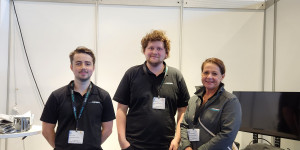As electric vehicle numbers surge, so does the pressure on electricity networks. Embrium’s here to help. With R&D support from Callaghan Innovation, they’re giving electricity lines companies some of their power back.
At a glance
- The rise of electric vehicles could cause chaos on the network, but Embrium is developing technologies allowing electricity lines companies to monitor and control electric vehicle charging in real time.
- Callaghan Innovation’s grants have enabled accelerated R&D, helping Embrium hire more talent and grow faster.
- A regional lines company has already invested, looking to install Embrium’s GoodMeasure devices on their networks and access data they otherwise wouldn't get.
[Callaghan Innovation’s support] means we end up employing more people, so instead of having a team of four software developers we have six. It means we get there faster.
- Dean Gowans, Director, Embrium
Too many electric vehicles, not enough electricity
The age of the electric vehicle (EV) is upon us. But they’re the most energy-intensive consumer appliance ever made. Combine that with New Zealand already being on track to use twice as much electricity by 2050 as it does today, and infrastructure providers have a dilemma on their hands.
Entrepreneurs and electricity sector veterans Dean Gowans and Regan Ryan are addressing the problem with their energy management and control technology venture, Embrium.
“If we look at the growth in EVs, it won’t be long before a majority of us have them and if they’re all plugged into the grid at the same time, they’re going to wreak havoc,” says Gowans.
“We’re designing technology that allows them to be charged in such a way that their load is balanced, and they don’t add extra pressure on both utility and customer infrastructure.”
Lines companies - essentially the companies distributing electricity - currently have a limited view of what’s going on in the low voltage (LV) network, the network the average consumer is connected to. They haven’t needed more visibility, because until now they have largely viewed the network top-down. But how to monitor new energy load flow and EV loads is now a hot topic for network operators, Gowans says.
GoodMeasure, Embrium’s cloud-connected Connectivity-as-a-Service (CaaS) platform, sits within the LV network and allows for monitoring of energy flows in real time, collecting data and transferring it to the cloud for retailers, distributors and other energy service providers to get unprecedented, simultaneous access to metering and power quality data.
Supercharging Embrium’s efforts
Gowans and Ryan founded Embrium in 2013, but the speed of change in the energy industry now is such that Embrium must be quick with its engineering while maintaining high standards, Gowan says.
Callaghan Innovation’s grants, including R&D Experience and Career Grants, have been pivotal in helping accelerate the company’s R&D.
“It means we end up employing more people, so instead of having a team of four software developers we have six. It means we get there faster.”
We have also helped Embrium make connections outside its usual sphere and encouraged it to think globally, Callaghan Innovation Business Innovation Adviser – Energy and Environment James Muir says.
“We challenge Embrium from time to time about the fact this is where New Zealand is going to go, but there are also much larger markets overseas,” says Muir.

Dean Gowans
Succeeding in a new energy era
Embrium’s innovations in network monitoring are at the forefront of what’s been dubbed the ‘new energy era’. And one regional lines company is already so convinced that it has invested in the business.
Te Kuiti-based The Lines Company is a cornerstone shareholder and plans to install a number of GoodMeasure LVSense monitoring devices on its network, gathering data they may not otherwise get, CEO Sean Horgan says.
Embrium’s EV control technology is also of interest, especially given The Lines Company’s region is home to the North Island ski fields and EVs are becoming more prevalent with holidaymakers who need to charge up along the way. Yes, it’s more demand, but thanks to Embrium, they’ll be able to manage it in a much more innovative and efficient way.

























